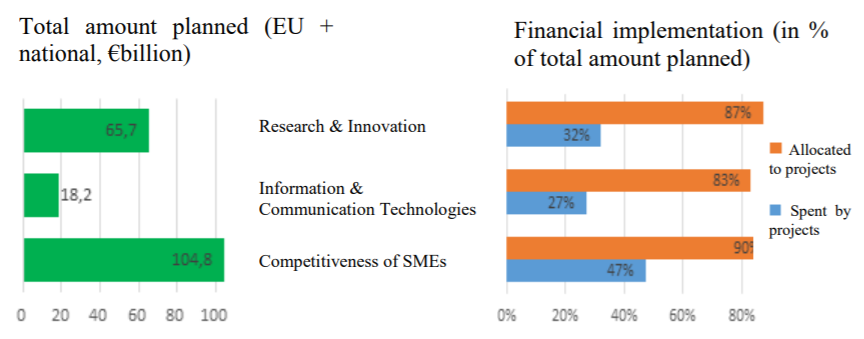 EU structural funds to the value of €65.7 billion were lined up for research and innovation projects between 2014 and 2020, but member states absorbed only 32% of this money, which is intended to help lagging regions invest in their research infrastructures, enabling them to better participate in EU R&D programmes, according to a new report.
EU structural funds to the value of €65.7 billion were lined up for research and innovation projects between 2014 and 2020, but member states absorbed only 32% of this money, which is intended to help lagging regions invest in their research infrastructures, enabling them to better participate in EU R&D programmes, according to a new report.
Overall, there was €463 billion from 2014-2020 in the structural funds of which 56% was spent by the end of 2020. While spending is low across the board, research money was absorbed particularly slowly, with 87% of the money allocated to specific projects but barely a third spent.
The smart objectives pillar, which includes research, technology and SME spending, had a budget of €189 billion, representing 30% of the total EU structural funding. Regions managed to allocate €144 billion to projects and spend €64.5 billion of the money by the end of 2019.
Information and communication technologies fared the worst, with only 27% of €18.2 billion that was available spent, and 83% allocated to specific projects.
Support for SME competitiveness was one of the best performing areas across the board, with almost half of an available €104.8 billion invested.
By the end of 2019, the research money had supported more than 34,000 collaborations between companies and research institutions and more than 17,000 of the funded companies had introduced new products to the market.
Starting this year, the EU begins a new seven-year budgetary period but the remaining money from the 2014-2020 period can be spent until the end of 2023.





 A unique international forum for public research organisations and companies to connect their external engagement with strategic interests around their R&D system.
A unique international forum for public research organisations and companies to connect their external engagement with strategic interests around their R&D system.